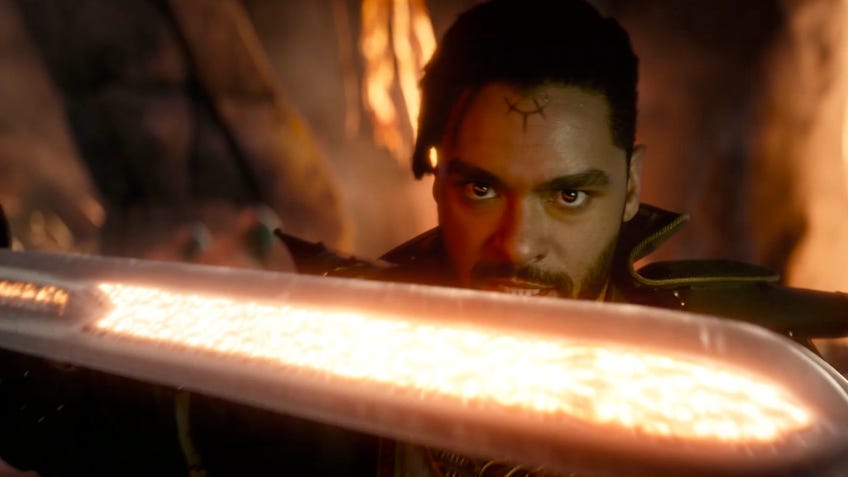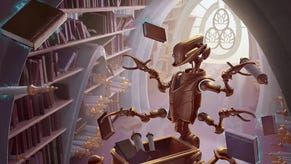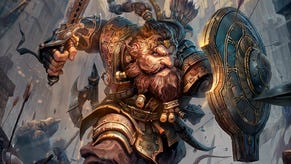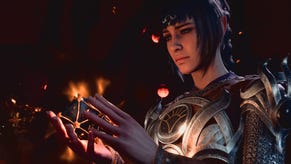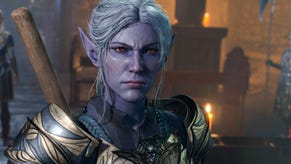5 things Honor Among Thieves gets right about D&D - and 3 it gets wrong
The Dungeons & Dragons movie already looks like a hit, but how faithful is it to 5E?
Dungeons & Dragons: Honor Among Thieves is now out in theaters, and has done a shockingly good job of bringing the beloved tabletop RPG system to screen.
Since the creative trash-fire that was 2000’s Dungeons & Dragons movie (sorry, Jeremy Irons), and the direct-to-DVD releases of its two follow-up films (no, I hadn’t heard of them either), it’s incredible that this year’s reboot has actually captured the feeling of playing at the table, with all the chaotic heists, absolutely-not-watertight plans and overly-specific rules of adventuring in the world of D&D.
Naturally, today’s D&D 5E ruleset is only a blueprint for a good story, and bending the rules is explicitly encouraged by D&D’s designers to ensure everyone has a good time – so we can forgive the few inaccuracies and allow some creative licence for the movie’s directors, who have largely made a faithful, yet fun adaptation of the dominant fantasy RPG game.
But for those who love a little nitpicking, and want to know how Honor Among Thieves compares to their own home game, here’s our list of things the D&D movie absolutely gets right – and those it clearly gets wrong.
5 things Honor Among Thieves gets right about D&D
1. Magic items
D&D’s treasure-hunting systems are underpinned with a voracious amount of loot – including hordes of magical and magic-infused items that elevate what a hero is capable of. There’s a pleasing amount of well-chosen, well-placed magic items throughout Honor Among Thieves, from a standard Amulet of Invisibility to an elusive Helm of Disjunction, that impact the story in clear and impactful ways – whether being deployed in a heist sequence or in the middle of combat. Even attuning to these items comes up as a major plot point!

2. Arbitrary spell limits
The D&D spell list has a love for things that come in threes or fives, and it’s something that’s depicted (and lampooned) in Honor Among Thieves to great effect. When casting Speak With Dead, a spell that allows you to ask a deceased spirit exactly five questions, characters rightly ask why it’s so “arbitrary” – and show what happens when casual conversation accidentally triggers all of the questions available, or leaves characters with unnecessary ones left, just like at the player table.
3. Spell components and arcane focuses
In a cinematic landscape dominated by Marvel superheroes shooting beams of energy at each other, it’s refreshing to see the D&D movie show the immense variety and complication of casting magic in the D&D universe. All types of spell components are depicted here, whether the intricate, clockwork spellcasting focus of Justice Smith’s sorcerer Simon, or the verbal and somatic components of spells cast throughout the film.
Each spell involves a unique set of gestures, words and requirements – often tying in real-life sign language – and, while the individual rules aren’t dwelled on, it’s great to see the beautiful magical system of the game brought to life so fully.

4. Low-stat characters are more fun
While optimised characters may be better at fighting, the D&D movie’s creative team understands that it’s often under-optimised characters that are the most fun to play – whether a predictably low-Intelligence barbarian, or a painfully low-Charisma sorcerer who can barely rely on his spells to work. A passing gag about Intellect Devourers – a classic D&D monster that preys on high-Intelligence characters – is absolutely delicious.
5. Failing forward
If you’ve played a game of D&D, you know that things always go wrong – but that the story needs to keep moving anyway. Even when a plan seems perfect, a slightly misplaced painting or triggered trap can waylay everything, and require a creative solution from the party. This is the real magic of playing D&D, responding to failures with ingenuity and improvisation, as player-characters stumble their way to the end of a quest, and it’s something Honor Among Thieves perfectly captures.
3 things Honor Among Thieves gets wrong about D&D
1. Wild Shape
It’s understandable that not everything in the film is mechanically accurate – this is a movie, and not a tabletop game. But the most glaring example of something that skirts the rules is Wild Shape.
Sophia Lillis’ tiefling druid, Doric, transforms into a medley of different creatures throughout the film, from an innocuous fly or mouse to a prancing deer or bellowing owlbear. For one, druids can’t usually turn into owlbears – certainly not in Fifth Edition, though high-level 3E druids could just about manage it. But Honor Among Thieves also allows an incredible number of Wild Shapes consecutively in one major chase sequence, far beyond the mere two uses druids get between rests. Technically a level 20 arch-druid can Wild Shape at will, though that’s less relevant for such a low-level party, and makes the druid seem even more overpowered than they are at the table.

2. Small races are misrepresented
A key part of Michelle Rodriguez's backstory is a halfling from her past. While the height difference is worth a chuckle in the film, something is a little off.
Here, halflings share the same body composition of other, larger races in the film – meaning that while they’re half the height of most other people, they don’t compensate with the slight stockiness associated with, say, hobbits in the Lord of the Rings trilogy, and look very out of place among the rest of the cast. For a film relatively restrained with its use of CGI – animatronic tabaxi, etc. – it was disappointing to see characters simply resized that way.
3. Bards
Ah, the bard. Is there a sillier class in all of D&D? As a musician that calls on the power of music to cast spells, the bard is hard to depict in a serious manner in a live-action flick like this. It makes sense that they made Chris Pine a magic-free bard – more of a rogue with the Entertainer background, really – though it’s a clear divergence from the realities of the source material. Who knows, though - maybe he’ll pick up a spell or two in the inevitable sequel.
